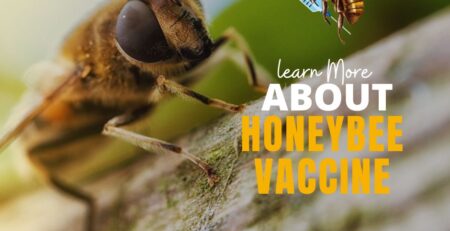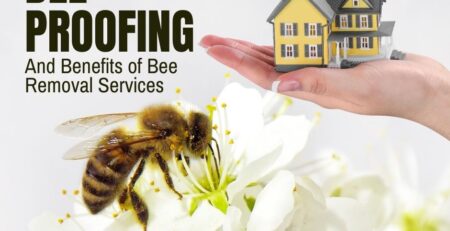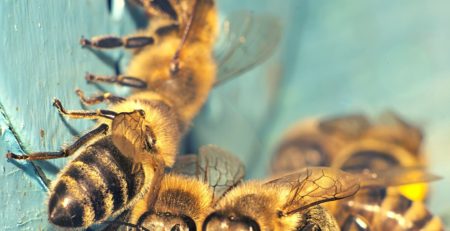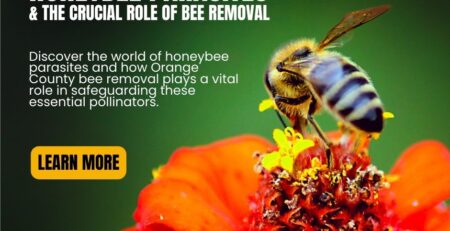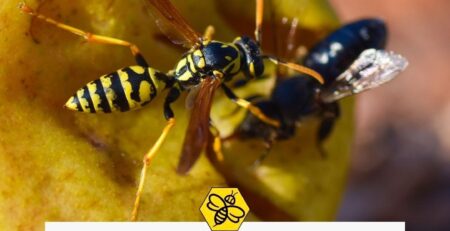How to Treat Bee Stings at Home
Unless you’re moderately to severely allergic to bee stings, in which case you need medical assistance right away, bee stings are more of an annoyance than a concern. It’ll hurt and itch for a while, but you’re going to come out of it A-OK with no serious complications.
So, if you just got hit with a nasty bee sting and are wondering how to cure it with common things found around your home, then we’ve got you covered! Here is our detailed guide on easy treatment for bee stings.
First Aid
When you first get stung by a bee, the first thing you need to do is get away as quickly as you can. Bees can be very territorial, so chances are, you got stung by them because you got too close to their hive for comfort. Additionally, bees send pheromones to other bees signaling them for backup, so unless you’d want even more bee stings on you, it’s best to get away quickly.
Once you’re in a safe spot, take a look at the area where you were stung. You’ll probably see the stinger still lodged in your skin, so you’ll want to remove that quickly to stop the venom from seeping further. Use a straight-edged object like a knife or a debit card to scrape off. Don’t use a tweezer—this could squeeze more venom into your skin and make it hurt even more!
Then, clean the area off with soap and water. This’ll prevent infection. Once it’s nice and clean, you can start looking for options to treat the inflammation and pain.
Let’s start with the most reliable ways to treat bee stings first:
Ice
Ice does seem like it can fix anything, doesn’t it? It’s the go-to item to reduce pain, swelling, and inflammation as it reduces blood flow in the area. You can’t feel pain if your skin is pleasantly numb!
Whip up a cold compress and apply gently on the sting and the surrounding skin. Do this for around 20 minutes.
Anti-Inflammatories
Don’t want inflammation? Take an anti-inflammatory pill! There are a couple of over-the-counter pills like Advil and Motrin that you can pop in to lower your body’s inflammation and reduce pain in the area. If you’d rather go for a cream-based medication, apply a dab of hydrocortisone cream or calamine lotion directly on the sting.
Antihistamines
A lot of people have mild allergies to bee stings. If you notice that the sting is particularly itchy, you could try taking a Benadryl or Zyrtec to help assuage the allergic reaction.
Take note that this only works if you’re mildly allergic to bee stings. If you experience persistent symptoms or other serious conditions (e.g., breathing difficulties, lightheadedness) after your bee sting, consult your doctor or visit the hospital right away.
Home Remedies
Some people like to treat their bee stings with common household items. They’re not as reliable as the previous section because there isn’t much scientific research to back it up, but they have been passed down from generation to generation so much that it’s worth a try if you don’t have any medications lying around.
Take note that these home remedies should, at the very least, not cause pain to the sting area. If it does, wash it off and never try these again.
Honey
It sounds ironic to cure your bee sting with the food they eat, but honey has pretty awesome healing properties. It’s antimicrobial, meaning it repels bacteria and fungi and has been shown to promote physical healing!
Apply a small dab of honey or honey sticks into the affected area, cover it up with a loose bandage, and see what happens for an hour.
Baking Soda
Take a peek in your kitchen cupboard and see if you have baking soda lying around. According to the CDC, a paste made of baking soda and water helps to neutralize mosquito bites and can potentially work for bee stings as well, reducing itchiness.
Mix a teaspoon of clean water with just enough baking soda to make a thick paste. Apply it to the area, let it dry, and rinse it off. You could also add a bandage around it for better effects before rinsing it off.
Toothpaste
Toothpaste is something everybody should have in their home, so if you’ve got no other options, why not try toothpaste?
This is one of those home remedies that don’t have much scientific research behind it. However, lots of people claim that it can help neutralize and draw out venom from the area and also provide a cool, minty fresh effect on the skin.
Simply apply a tiny bit of it to the sting area and wash it off after a few minutes.
Apple Cider Vinegar
Apple cider vinegar is a superpower food that lots of people (including scientists!) swear by. It has a range of uses including managing insulin resistance, improving the skin, aiding weight loss, preventing illnesses, and more. Plus, it’s antibacterial!
Apple cider vinegar is pretty strong, so you’ll want to dilute it with half-parts water first before using it on your sting. You can either submerge the area or dab it with a cloth.
Plants and Essential Oils
Ah, the timeless classics. Plants and essential oils have been a part of traditional medicine around the world since time immemorial and have been recently trending a lot lately. They’re said to promote a healthy lifestyle by helping you sleep, calming stress and anxiety, clearing acne, preventing diseases, and apparently, healing bee stings!
Aloe Vera
Aloe vera is a common home remedy for sunburns as it soothes irritated skin. You can either buy aloe vera gels or pastes from your local store or cut a leaf off an aloe plant and use that. Aloe plants are sturdy and can live in almost any environment.
Witch Hazel
Witch hazel is another common plant extract that’s good for insect bites. It protects your skin from damage by inflammation and infection. Add a drop or two of witch hazel onto your sting area.
Calendula
Studies have shown that calendula is effective at fixing various skin conditions like diaper rash, wounds, vaginal yeast infections, and more. Use calendula cream on the sting area and wrap with a bandage to set.
Lavender
Lavender doesn’t only smell good—it feels good too! It’s also one of the most popular essential oils on the market today.
Lavender oil is pretty strong, so you’ll need to dilute it with a carrier first like coconut oil before you can use it. Apply a few drops directly on the sting.
Tea Tree
Tea tree oil is considered magic in the skincare world. It moisturizes dry skin, prevents oily skin, clears off acne and dark spots, and more.
However, like lavender oil, it’s very strong and should not be applied as-is on the skin. You’ll need at least ten drops of carrier oil for one to two drops of tea tree oil. Apply the mixture onto the area and perhaps use the rest of it on your face—you’ll face will be glowing!
Conclusion
Again, please remember that this article is only applicable to those who experience mild to no allergic reactions to bee stings. Home remedies can only take you so far. If you’re having adverse allergic reactions, you need to visit your physician or take a trip to the hospital, especially if you’re having trouble breathing.
Additionally, while these treatments might work for bee stings, they might not be as effective against other insect bites or stings. Make sure you’re doing your research first before applying anything willy-nilly on your skin.
Lastly, the best cure for bee stings is prevention. If you’ve got a bee infestation on your property, please call pest control to safely transport them elsewhere for you. If you live in Southern California, why not consider The Bee Man? We offer services in bee removal in Irvine and Orange County and are available 24/7 for your convenience. Reach out to us today at (949) 455-0123 to get a quote!


